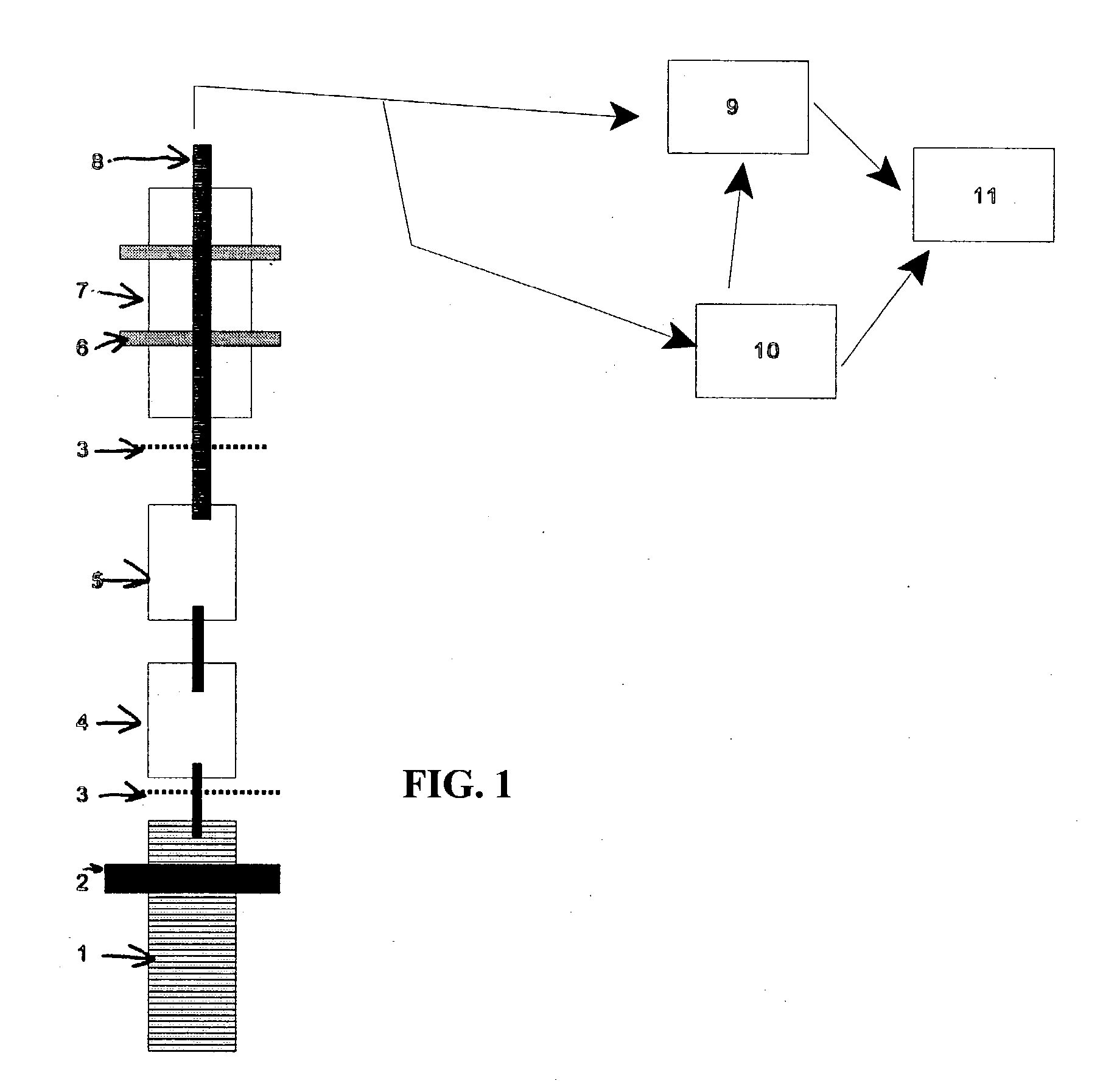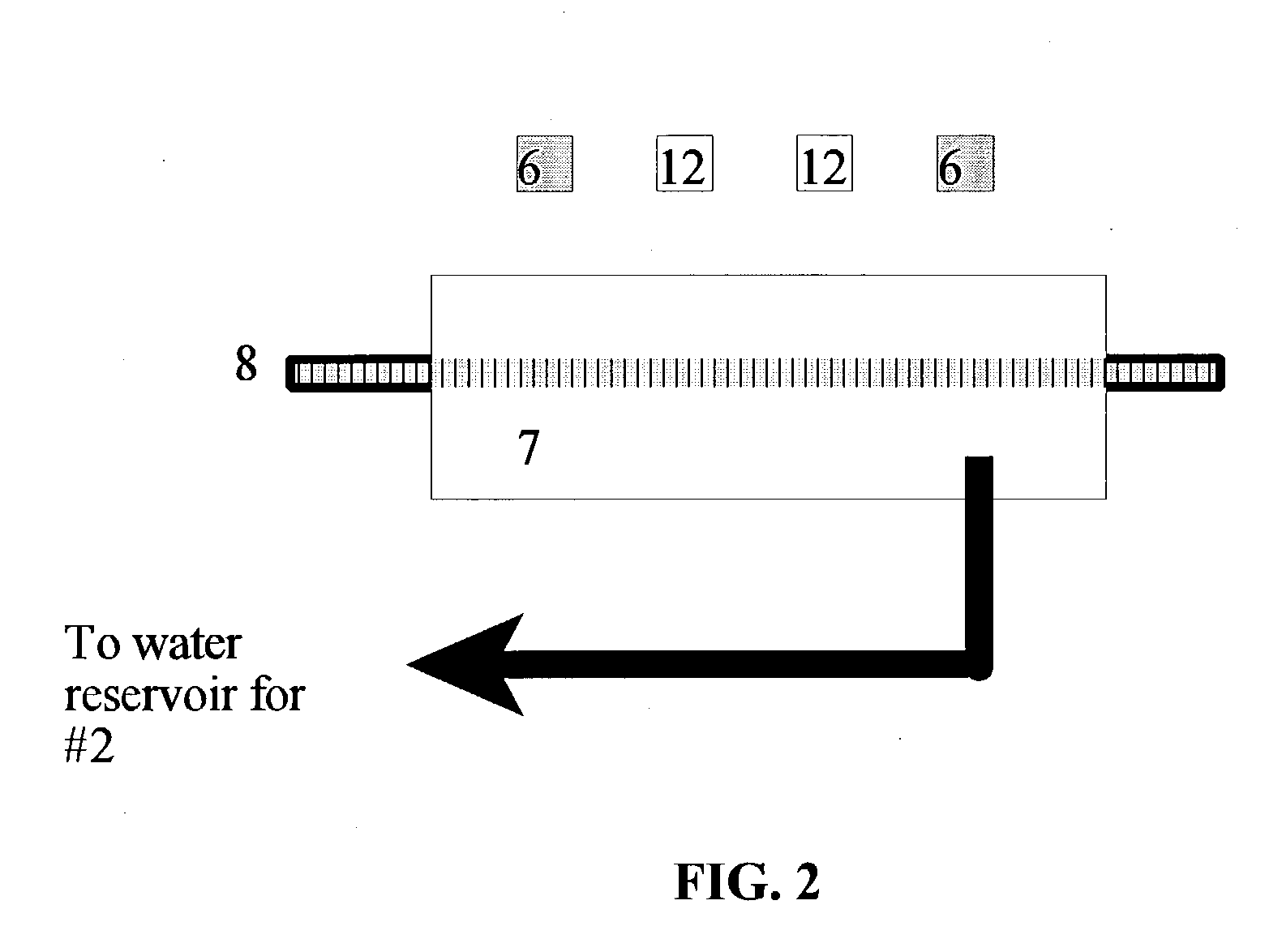System for maintaining fresh quality and safe food attributes of minimally processed produce
a technology of fresh quality and food attributes, applied in the field of system for maintaining fresh quality and safe food attributes of minimally processed produce, can solve problems such as surface deformation, and achieve the effects of reducing human pathogens, improving organoleptic properties, and reducing the risk of food-borne illness
- Summary
- Abstract
- Description
- Claims
- Application Information
AI Technical Summary
Benefits of technology
Problems solved by technology
Method used
Image
Examples
example 1
[0071] Mushrooms were either 1) untreated (unwashed), that is, left as picked; 2) sodium metabisulfite (sulfite treated) washed. Mushrooms were water rinsed with tap water for 2 seconds then processed through 2 consecutive dip tanks containing 500 ppm sodium metabisulfite in solution; or 3) Washed using the herein disclosed process (new wash) specifically as follows: Mushrooms were conveyed on a slotted conveyor belt and sprayed with tap water for 2 seconds. They dropped into a series of two dip tanks containing 3% (w / v) sodium erythorbate, 0.15% (w / v) disodium EDTA, 0.15% (w / v) calcium chloride. Total residence time was 30 seconds. The whole mushrooms were then treated by dipping in water containing 2 ppm ozone (15 second exposure) followed immediately by 10 second exposure to ultraviolet lamp. Half of the mushroom were sliced and again exposed to 10 seconds of ultraviolet lamp. The mushrooms were packaged and stored at either 35, 45 or 55 degrees Fahrenheit and analyzed microbiolo...
example 2
[0081] Mushrooms were either 1) Mushrooms were washed with water (2-3 second drench with tap water) then processed through 2 consecutive dip tanks containing an aqueous solution of 500 ppm sodium metabisulfite (sulfite treated); or 2) Washed using the herein disclosed process (new wash) specifically as follows: Mushrooms were conveyed on a slotted conveyor belt and sprayed with tap water for seconds. They dropped into a series of two dip tanks containing 3% (w / v) sodium erythorbate, 0.15% (w / v) disodium EDTA, 0.15% (w / v) calcium chloride. Total residence time was 30 seconds. The whole mushrooms were then treated with 2 ppm ozone spray followed by 10 second exposure to ultraviolet lamp. Half of the mushroom were sliced and again exposed to 10 seconds of ultraviolet lamp. The mushrooms were packaged and stored at either 35, 45 or 55 degrees Fahrenheit. 35 degree F. stored samples were analyzed at day 0, 2, 6, and 9 and 14 for total aerobic plate count. Both 35 and 45 degree F. stored ...
example 3
[0085] Mushrooms were either 1) untreated (unwashed), that is, left as picked; 2)sodium metabisulfite (sulfite treated) washed. Mushrooms were water rinsed with tap water for 5 seconds then processed through 2 consecutive dip tanks containing 500 ppm sodium metabisulfite; or 3)Washed using the herein disclosed process (new wash) specifically as follows: Mushrooms were conveyed on a slotted conveyor belt and sprayed with tap water for 2 seconds. They dropped into a series of two dip tanks containing 3% (w / v) sodium erythorbate, 0.3% (w / v) sodium chloride, 0.3% (w / v) calcium chloride. Total residence time was 30 seconds. In the third treatment (new wash 1) the whole mushrooms were then treated with 2 ppm ozone spray followed immediately by 10 second exposure to ultraviolet lamp. New wash 2 mushrooms were treated as described above but was treated only with ozone, no ultraviolet light. New wash 3 mushrooms were treated with 7 seconds of ultraviolet light, no ozone. New wash 4 mushrooms...
PUM
 Login to View More
Login to View More Abstract
Description
Claims
Application Information
 Login to View More
Login to View More - R&D
- Intellectual Property
- Life Sciences
- Materials
- Tech Scout
- Unparalleled Data Quality
- Higher Quality Content
- 60% Fewer Hallucinations
Browse by: Latest US Patents, China's latest patents, Technical Efficacy Thesaurus, Application Domain, Technology Topic, Popular Technical Reports.
© 2025 PatSnap. All rights reserved.Legal|Privacy policy|Modern Slavery Act Transparency Statement|Sitemap|About US| Contact US: help@patsnap.com



